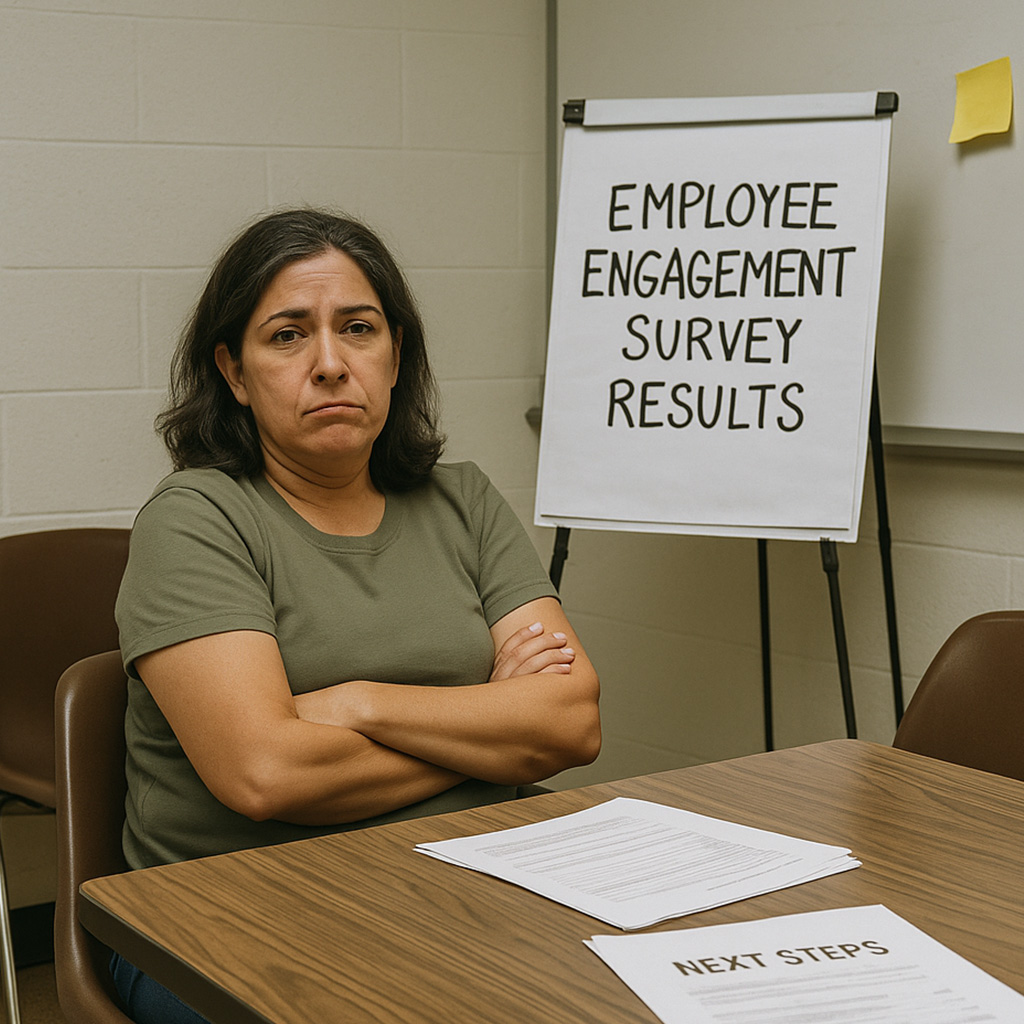Why Employee Engagement Surveys Don’t Work (And How to Fix Them)


Employee engagement surveys should be a goldmine of insight. They’re supposed to uncover how people feel, highlight areas for improvement, and help companies build better workplaces.
But more often than not? They flop.
Employees see them as pointless. HR teams struggle to make sense of the results. Leadership nods at the data and then… nothing changes. And next year, when the survey rolls around again, participation drops even lower because employees know it won’t make a difference.
So, what’s going wrong? Why don’t engagement surveys actually work? Let’s break it down.
Surveys don’t fail because of the questions—they fail because companies don’t act on the answers. Imagine asking employees for feedback, getting a flood of honest responses, and then doing… absolutely nothing. Sound familiar?
That’s the number one reason engagement surveys don’t work: lack of follow-through.
You know the drill. Employees take the survey, HR compiles the data, leadership reviews the results—and then? Silence. No updates. No visible changes. Just a polite “Thanks for your feedback” email that employees barely skim before going back to work.
💡 Fix it: Transparency is key. Companies need to communicate survey results and, more importantly, share exactly what actions they’re taking in response. No action plan? No trust.
Ever notice how employees get nervous about engagement surveys? That’s because they don’t trust them. If you’re asking about management effectiveness or workplace culture, but employees think their responses can be traced back to them, guess what? They’ll sugarcoat their answers—or worse, skip the survey entirely.
💡 Fix it: True anonymity matters. Companies should use third-party providers (like Flex Surveys) that guarantee confidentiality. And leaders need to prove—through action, not just words—that honest feedback won’t lead to retaliation.
If you’re constantly asking employees for feedback but never doing anything with it, they’ll stop responding. Period. Employees are tired of taking surveys that feel like a waste of time.
💡 Fix it: Keep it short, meaningful, and spaced out appropriately. A well-timed, well-crafted survey is far more effective than a barrage of pulse surveys that never lead to change.
A question like “Do you feel valued at work?” sounds fine—but what does it actually tell you? Does “valued” mean salary? Recognition? Growth opportunities? If you don’t dig deeper, you’ll get vague responses that don’t lead to actionable insights.
💡 Fix it: Ask targeted, specific questions that uncover why employees feel a certain way. Better yet, provide space for open-ended responses where employees can share real thoughts, not just click a number on a scale.
Here’s a hard truth: HR can’t fix engagement alone. If leadership doesn’t see engagement as their responsibility, survey results will never translate into real change. Employees notice when their leaders ignore feedback—and it kills morale.
💡 Fix it: Leaders need to take ownership of engagement. That means reviewing survey results with their teams, discussing challenges openly, and committing to real action—not just leaving it to HR.
Even when companies want to act on survey results, they often don’t know how. The data sits in a spreadsheet, and leadership is left asking, “Okay… now what?”
💡 Fix it: This is where tools like Flex Surveys’ Action Planning Tool come in. Our AI-driven platform takes the guesswork out of post-survey action. It highlights trends, prioritizes key areas for improvement, and even suggests next steps—so companies don’t just collect data; they act on it.
The biggest mistake companies make? Treating engagement as a survey instead of a strategy. A once-a-year questionnaire won’t fix deep-rooted culture issues, poor management, or lack of growth opportunities.
💡 Fix it: Engagement is an ongoing conversation, not a one-time event. Companies need to:
At Flex Surveys, we know that a survey alone isn’t enough. That’s why we don’t just collect data—we help companies turn insights into action. Here’s how:
No more drowning in data. Our AI analyzes responses, detects patterns, and highlights the most critical areas for improvement.
Survey results should lead to real change. Our platform helps companies create and track action plans, ensuring that engagement isn’t just measured—it’s improved.
Forget generic templates. We build engagement surveys that reflect each company’s unique culture and goals, leading to more meaningful insights.
Employee engagement surveys aren’t the problem—it’s what happens after the survey that determines success. If companies want to improve engagement, they need to do more than just collect feedback. They need to act on it.
Because when employees see that their voices lead to real change, they don’t just participate in surveys—they engage. And that’s the whole point, isn’t it?
Create your own survey for almost anything.
The most comprehensive solution for all your insight needs
